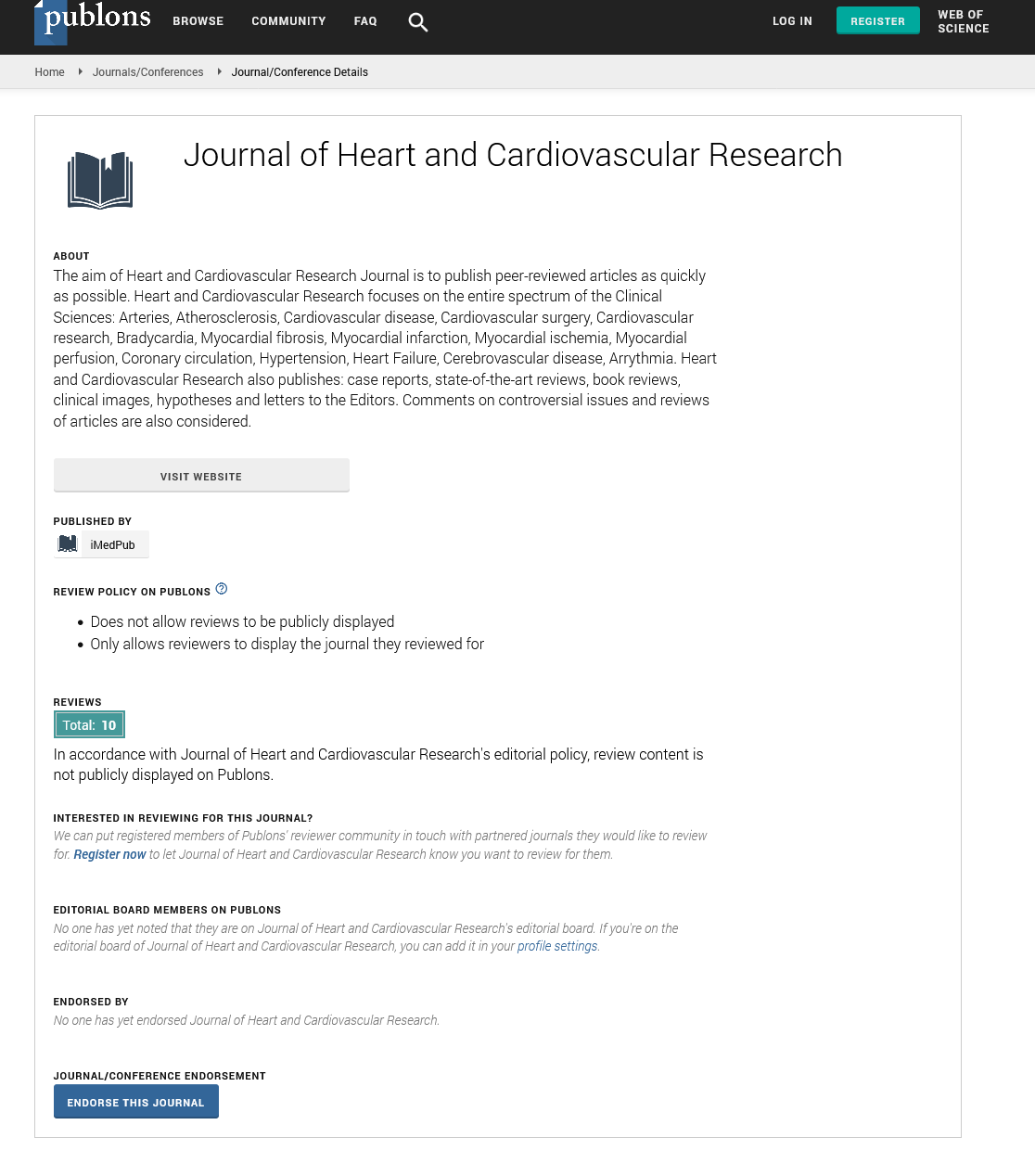ISSN : ISSN: 2576-1455
Journal of Heart and Cardiovascular Research
Abstract
Cardiology 2019: Effect of moderate physical activity on reduce of blood pressure in hypertensive patients - Simin Jafari - Islamic Azad University
Introduction: With one-quarter of the world’s adult population estimated to have hypertension, totaling nearly one-billion, and with the worldwide prevalence of hypertension projected to increase 60% by 2025, the primary prevention of hypertension has become a global public health challenge. Current guidelines recommend increasing physical activity as a means to prevent hypertension. These guidelines stem from a large body of literature demonstrating the protective effects of physical activity and exercise. The earliest study to demonstrate the potential protective effects of physical activity in hypertension prevention was published in 1968 by Paffenbarger et al. who showed that men who self-reported exercising more than 5 hours/week experienced a lower incidence of hypertension two to three decades later in life. Following this observation, the first interventional study to demonstrate the blood pressure (BP) lowering effect of exercise was published in 1970 by Boyer and Kasch who showed that an aerobic interval training program 2 days/week elicited reductions in BP in both hypertensive and normotensive men.Over the past four to five decades since these publications, accumulating data has generally yielded consistent findings regarding the protective effects of physical activity in the prevention of hypertension. However, many unanswered questions remain regarding the optimal prescription for hypertension prevention. In recent years several important prospective studies and meta-analyses of intervention data have been published which have investigated the many nuanced components of physical activity in relation to hypertension prevention and may help to address some of the previously unanswered questions. The purpose of this report is to review the most recent evidence for the role of physical activity in the prevention of hypertension and discuss the recent studies that have sought to address these unanswered questions.
The purpose of this study was to measure the effects of moderate physical activity (60% of Maximal Heart Rate, MHR) on the reduction of blood pressure in elderly people with hypertension. Hypertension is considered a modifiable risk factor for cardiovascular disease through physical activity. The purpose and significance of this study, was to investigate the role of exercise as an alternative therapy, since some patients exhibit sensitivity/intolerance to some drugs. Initially, 30 hypertensive males (average age=46.7 years) were selected (systolic blood pressure, SBP>140 mmHg and/or diastolic blood pressure, DBP>90mmHg). The subjects were divided based on their age, duration of disease, physical activity and drug consumption. Then, blood pressure and Heart Rate (HR) were measured in all of the patients using sphygmomanometer (pre-test). The exercise session was consisted of warm up, aerobic activity and cool down (total duration 45 minutes). At end of the session, blood pressure measured for the second time (post-test). The results were analyzed using t-test. Our results indicated that moderate physical activity was effective in lowering blood pressure by 7.16 mmHg for SBP and 4.93 mmHg for DBP in hypertensive patients, irrespective of age, duration of disease, physical activity and drug consumption (p<0.05). Physical activity programs with moderate intensity (approximately at 60% MHR), four days per week can be used not only as a preventive measure for diastolic hypertension (DBP>90 mmHg high blood pressure), but as an alternative to drug therapy in the treatment of hypertension, as well. Aerobic exercise is able to produce reductions in hypertensive patients. Recent findings suggest that a modification of dietary and fitness habits are helpful in the prevention or the control of high blood pressure. Previous studies showed that patients with hypertension managed to reduce their blood pressure by about 6-10 mmHg through physical activity. These results are similar to the reductions achieved in the current study. Applications of this study are simple and useful for prevention and treatment of hypertension.
Author(s): Simin Jafari
Abstract | PDF
Share This Article
Google Scholar citation report
Citations : 34
Journal of Heart and Cardiovascular Research received 34 citations as per Google Scholar report
Journal of Heart and Cardiovascular Research peer review process verified at publons
Abstracted/Indexed in
- Google Scholar
- Sherpa Romeo
- China National Knowledge Infrastructure (CNKI)
- Publons
Open Access Journals
- Aquaculture & Veterinary Science
- Chemistry & Chemical Sciences
- Clinical Sciences
- Engineering
- General Science
- Genetics & Molecular Biology
- Health Care & Nursing
- Immunology & Microbiology
- Materials Science
- Mathematics & Physics
- Medical Sciences
- Neurology & Psychiatry
- Oncology & Cancer Science
- Pharmaceutical Sciences
